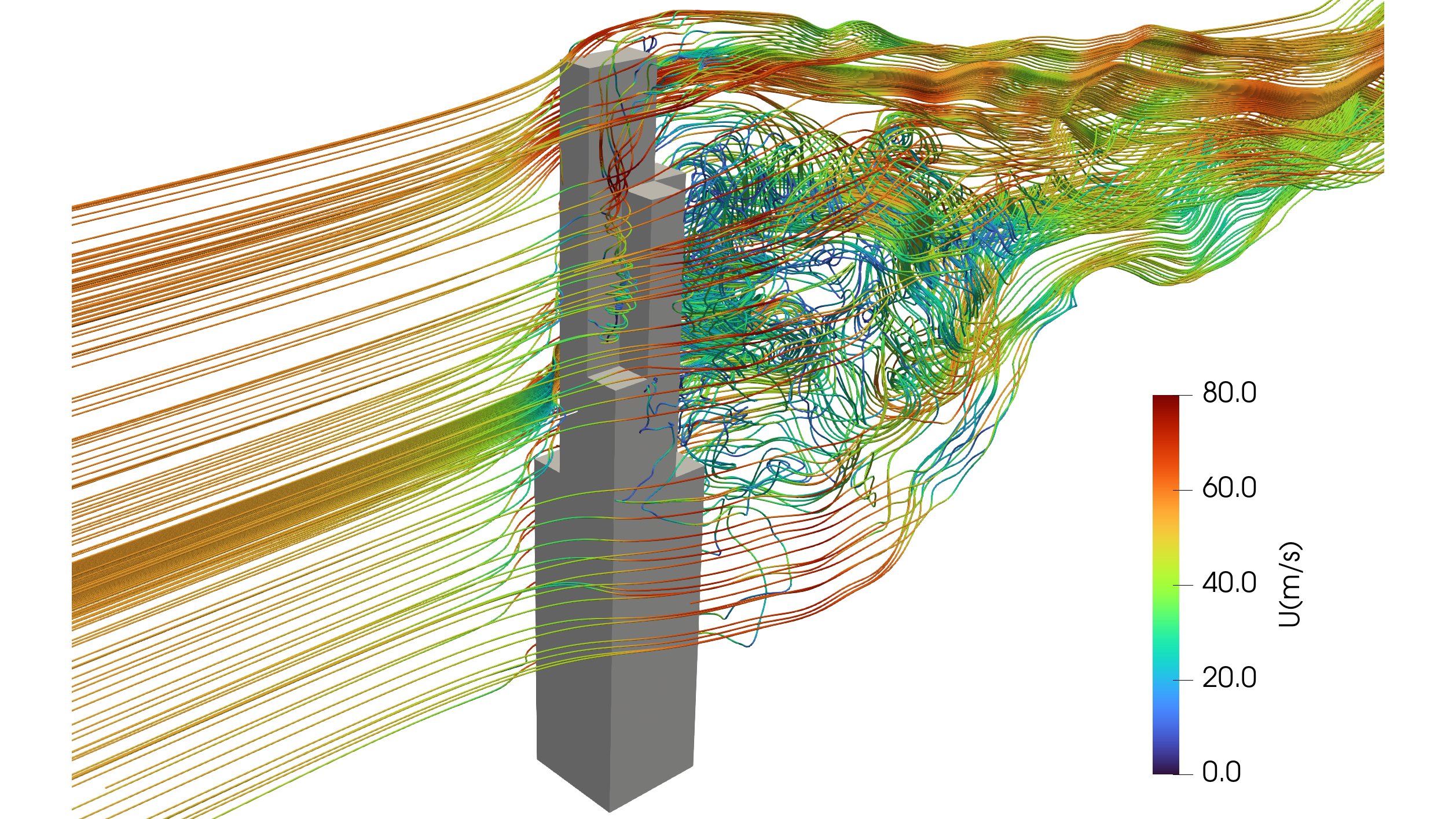
The WE-UQ Application is open-source software that provides researchers a tool to assess the response of a building subjected to wind loading. The application incorporates uncertainty quantification in the structure’s response to account for the user’s assumptions of the building properties and numerical modeling.
A “CFD Model for an Isolated Building with Complex Geometry” is implemented in WE-UQ Version 3.1. This feature enables users to run high-fidelity CFD simulations on single (isolated) buildings with complex, non-rectangular floor plans and elevations. The simulation can be performed in full-scale or at reduced scale mimicking an actual wind tunnel setup. The current version implements a versatile CFD workflow where the user can seamlessly import the geometry of the building with an STL file, generate unstructured mesh, define boundary conditions, specify the turbulence modeling and other numerical setups. The CFD simulation is conducted in parallel to obtain the transient wind loads on structures by running OpenFOAM solvers in the backend. Finally, the response of the structure is evaluated using OpenSees while propagating uncertainties of the structural properties. Because of the computational demand required for simulation, WE-UQ provides the researcher with access to the TACC Frontera HPC at no cost.
Download the WE-UQ (V3.1) update to take advantage of the new feature. Example 3.6 provided in the WE-UQ documentation includes input files that can easily be used as a template.
How to cite:
Frank McKenna, Abiy Melaku, Fei Ding, Jiawei Wan, Peter Mackenzie-Helnwein, Wael Elhaddad, & Michael Gardner. (2023). NHERI-SimCenter/WE-UQ: Version 3.1.0 (v3.1.0). Zenodo. https://doi.org/10.5281/zenodo.8396121.
Gregory G. Deierlein, Frank McKenna, Adam Zsarnóczay, Tracy Kijewski-Correa, Ahsan Kareem, Wael Elhaddad, Laura Lowes, Matt J. Schoettler, and Sanjay Govindjee (2020). A Cloud-Enabled Application Framework for Simulating Regional-Scale Impacts of Natural Hazards on the Built Environment. Frontiers in the Built Environment. 6:558706. DOI: 10.3389/fbuil.2020.558706